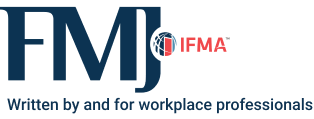Fix It Before It Fails
Reinvesting in educational facilities

Despite dealing with aging infrastructure, deferred maintenance and rising expectations, facility leaders in education often struggle with making the case for strategic investment in the learning environment. To strengthen their case to administration, FMs must clearly present rationale, language and tools to win support and funding.
“Do not ask for money to fix pipes — ask for money to protect student learning, avoid emergency shutdowns and preserve institutional credibility.”
The urgency of educational infrastructure investment
Educational institution FM is no longer simply a matter of fixing leaky roofs or aging boilers. The condition of educational facilities is directly tied to student performance, staff retention and institutional credibility. Research from the U.S. Government Accountability Office (GAO) found that over 50 percent of American public-school districts need to update or replace multiple building systems. In Canada, the situation is similarly pressing. The Council of Ministers of Education has repeatedly flagged infrastructure renewal as a critical barrier to learning equity.
The connection between infrastructure and learning is not abstract. A study by the University of Salford in the U.K. revealed that well-designed learning environments can boost student performance by up to 16 percent in a single year. Air quality, lighting, acoustics and temperature control all influence attention spans and cognitive function. When these fail, it is not just discomfort, it is diminished learning outcomes.
Enter the broken window theory. Originally applied to crime prevention, this concept posits that minor signs of disorder, such as broken windows, invite more serious neglect from FM teams. In education, the theory plays out through declining facility conditions, telling students and staff they do not matter. Cracked tiles, flickering lights or graffiti-covered walls communicate neglect, undercutting morale and institutional pride.
Institutional reputation is also at stake. In an era of competitive enrollment and public accountability, first impressions matter. Families visiting a dilapidated K-12 school or prospective students touring an outdated university campus quickly form judgments. For publicly funded institutions, physical disrepair raises questions about leadership, stewardship and priorities. It erodes public trust and donor confidence.
In short, failing infrastructure does not just look bad; it performs poorly, affects learning and compromises an institution's standing. Educational facilities are not neutral containers. They are active participants in delivering the mission, and they require investment aligned with their role.
Implementation strategies
-
Use research-based findings to link facility conditions to student achievement in institutional funding proposals.
-
Conduct a walkthrough audit and document minor but visible facility issues that signal neglect.
-
Include photos and quotes from students or staff to personalize the impact of failing infrastructure.
-
Frame requests not just as maintenance needs, but as investments in learning outcomes and institutional success.
The hidden price of doing nothing
When facilities break, it is often not the visible crack that costs the most; it is the years of neglect that come before it. Deferred maintenance, when left unaddressed, does not just accumulate — it multiplies.
Studies from the National Association of College and University Business Officers and the Association of Physical Plant Administrators (APPA) estimate that for every US$1 of deferred maintenance not addressed promptly, institutions can expect to spend US$4- US$7 in future capital expenses.
That is a compounding cost no CFO can afford to ignore.
Furthermore, failing to act can lead to catastrophic equipment failures that are exponentially more expensive than routine maintenance or replacement. A burst heating pipe in winter can shut down entire wings, damage finishes and force emergency relocation of classes, all at a premium. In 2023, a midwestern U.S. school district reported over US$1.2 million in emergency repairs due to a preventable HVAC collapse. The fix would have cost less than one-fifth if done as scheduled maintenance.
Preventive maintenance is the backbone of asset longevity, yet it is often sacrificed during budget crunches. Demand or reactive maintenance, also known as fixing things when they break, may appear less expensive in the short term, but it is far costlier in the long run.
APPA’s findings confirm that a program with 80 percent planned maintenance and 20 percent reactive is ideal. Most institutions, however, are inverted, operating at 60 percent or higher reactive levels.
FM leaders must shift the narrative from “fix it when it breaks” to “fix it before it fails.” That mindset requires data, visibility and buy-in from financial leaders who may not see the daily consequences of deferred decisions. Maintenance logs, backlog estimates and risk-based prioritization tools can illuminate hidden risks and bring urgency to conversations about funding and planning.
Implementation strategies
-
Quantify institutional maintenance backlog and project future costs if the issues remain unresolved.
-
Track emergency repair costs and use them to demonstrate the actual price of inaction.
-
Shift institutional maintenance ratio toward planned work — target at least 60 percent preventive.
-
Communicate risks to leadership in plain language: “This failure will cost five times more if the FM team waits.”
When capital dreams undermine operational reality
FM does not exist in a vacuum, but budgets often do. In many educational institutions, capital and operating budgets are planned, approved and tracked in isolation. This separation creates a total cost of ownership (TCO) blind spot, where decision-makers fund what they can see, like flashy new buildings, while underinvesting in the systems and processes that keep those buildings running.
Here is a real-world example: A Canadian university installed high-efficiency HVAC systems in a major campus expansion. However, the annual operating budget was not adjusted to accommodate the cost of specialized technician training and digital control software upgrades. Within two years, breakdowns outpaced savings. The investment was sound, but the support was not.
This misalignment is not rare. In the U.S., the National Institute of Building Sciences has long advocated for TCO principles in public sector building investments, noting that 80 percent of a building’s life cycle cost occurs during operations, rather than during construction. When FM leaders are excluded from capital planning, or when O&M budgets are treated as fixed rather than strategic, institutions embed inefficiencies into their future.
FM teams must work across silos to advocate for life cycle thinking. TCO is not just a financial metric — it is a leadership mindset. It requires collaboration between facilities, finance, capital planning and procurement to ensure that decisions made today do not become liabilities tomorrow. Building a new science wing without an FM resourcing plan is not a win; it is a ticking time bomb.
Implementation strategies
-
Use TCO calculators to frame funding requests with full life cycle costs in mind.
-
Request a seat at the capital planning table to influence operational readiness.
-
Present capital and O&M costs together to show the actual cost of ownership, not just construction.
-
Partner with finance to track deferred maintenance as an institutional liability, not just a facilities issue.
Today’s students, yesterday’s buildings
Educational facilities are aging fast. In both Canada and the U.S., the average age of school buildings now exceeds 40 years. Yet education has changed dramatically in that time. Classrooms built for chalkboards and lectures must now support collaborative, digital and inclusive learning styles. The result? A widening gap between the spaces that FM teams have and the learning facilities that FM teams expect.
This gap is not just inconvenient; it is a strategic risk. As pedagogical models evolve, facilities that are not flexible, tech-enabled or accessible can actively undermine learning goals. For example, outdated science labs may prevent institutions from delivering the required curriculum, limiting enrollment in key programs and jeopardizing accreditation. The cost is not just functional, it is reputational and financial.
Compounding the challenge, older buildings have rising maintenance needs. APPA data shows that annual maintenance requirements increase significantly after 25 years, and spike again past 40. Yet budget formulas often remain static, failing to account for aging infrastructure. The result is predictable: overwhelmed teams, mounting backlogs and buildings pushed past their useful lives.
FM leaders must reframe aging not as a liability, but as a planning imperative. Strategic reinvestment, targeted renovations and flexible space retrofits can extend asset life while meeting modern needs. However, it requires data, urgency and leadership alignment to prioritize these upgrades before a crisis forces the issue.
Implementation strategies
- Map the age of buildings across institutional portfolio to identify risk areas tied to aging infrastructure.
- Align capital planning with program delivery needs, especially in high-demand or accreditation-sensitive spaces.
- Use classroom utilization and flexibility metrics to make the case for modernization.
- Do not just request funds for repairs, make the case for educational alignment and strategic reinvestment.
Making the case: How to secure funding
A solid business case is more than a budget request — it is a strategic narrative that connects facilities investment to institutional success. It must translate technical needs into decision-maker language: risk, return and alignment with mission. The strongest cases do more than list deficiencies; they demonstrate how solving them supports learning, avoids bigger costs and protects reputation.
What a strong business case includes
-
Executive summary: Clearly state what you are asking for and why.
Example: “We are requesting US$2.5M over three years to address critical deferred maintenance at Building A, linked to student service disruption risk.”
-
Problem statement: Define the risk, urgency and scope of the issue.
Example: “Failure of this building’s HVAC risks class cancellations for over 3,200 students and significant emergency repair costs.”
-
Data & evidence: Support the request with credible data, such as condition assessments, APPA benchmarks, facilities leaders scores, energy consumption trends or incident reports.
-
Options analysis: Present alternatives and explain why institutional recommendation is most effective.
Example: “Reactive repairs would total US$5.7M over five years; but replacing the system now costs US2.5M and restores reliability.”
-
TCO & ROI: Demonstrate life cycle value and financial prudence.
Example: E“This investment reduces emergency costs by 75 percent and lowers annual energy expenses by US$120K.”
-
Strategic alignment: Connect the ask to institutional goals, such as sustainability, equity or student experience.
Example: “Supports the institution's climate action plan and improves indoor air quality for vulnerable learners.”
-
Risk if not funded: Highlight the consequences of inaction — financial, reputational or operational.
Example: “Continued delays raise the risk of regulatory noncompliance and reputational damage.”
Implementation strategies
-
Use templates institutional finance team already recognizes — mirror their language and structure.
-
Include visuals like cost trend graphs, failure spikes or risk heat maps.
-
Invite Finance collaboration early — co-ownership builds credibility.
-
Focus on outcomes: fewer disruptions, better student success and lower future costs.

Grant Sommerfeld, CFM, has almost 20 years of experience as a chief facilities officer in post-secondary, healthcare and municipal government, with demonstrated skills in managing complex facilities and large facilities management departments. In 2023, he transitioned from practitioner to consultant. He established Executive FM Consulting to support senior FM leaders in understanding, managing, and enhancing the performance of their facilities management operations. Sommerfeld holds an MBA and is a Certified Management Consultant (CMC), Certified Facility Manager (CFM), Certified Educational Facilities Professional (CEFP), and Chartered Facilities Management Surveyor (FRICS).
Read more on Project Management or related topics Facility Improvement , Financial Analysis and Operational and Capital Budgeting
Explore All FMJ Topics









